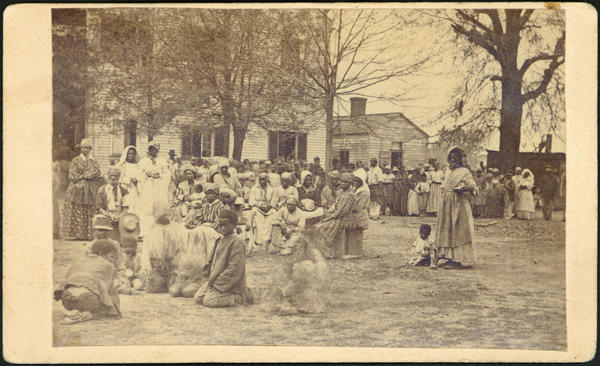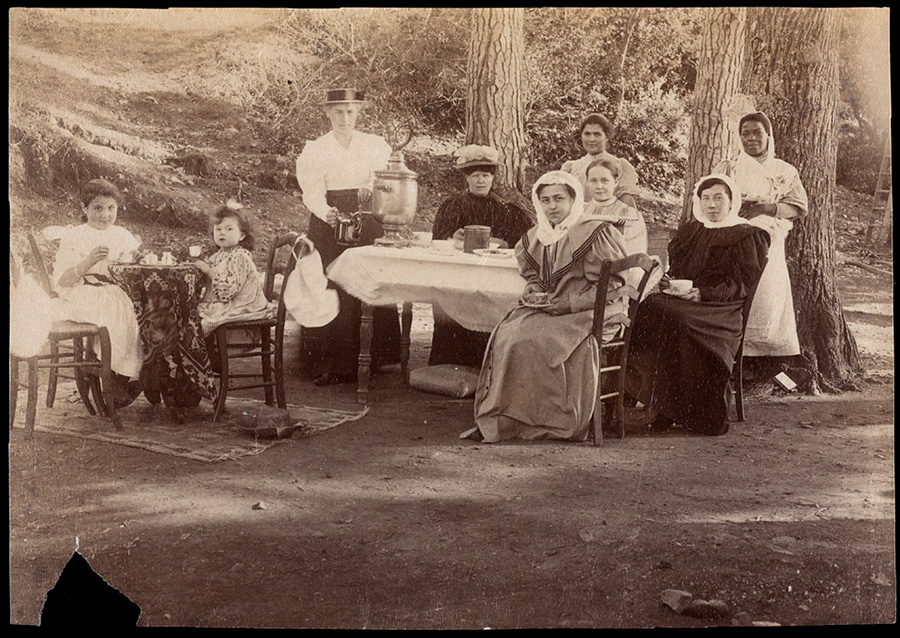Fashion in a Global City: Dress and the Camera in Late Ottoman Istanbul
“Fashion in a Global City: Dress and the Camera in Late Ottoman Istanbul,” the book project which was the subject of my two-month Center residency, presents a new contribution to the decentering of fashion history by focusing on the dress and women in Istanbul, the capital of an empire and an international trading center with a population composed of multiple ethnicities, races, and religions. Over the course of the long 19th century, the women of Istanbul gradually transformed their appearance, adopting European dress and new modes of self-fashioning, including photographs. Drawing on a close examination of surviving garments, paintings, photographs, and writings by Ottoman and foreign women, this project reconstructs a complex fashion history and the dramatic changes that took place in women’s lives in this period. The question of sources and methodology is central to the book: How can the disparate kinds of information that remain be used to create a coherent narrative of dress history? And what about the impact of absence, whether of garment or voice? Reconstructing the dress practices of women who do not appear regularly in most sources demands different research methods.
A crucial part of the decentering project of this work is the insertion of enslaved and working women, two groups long overlooked, into the fashion history of Ottoman Istanbul. The material culture of enslaved women in the Ottoman Empire has so far received very little scholarly attention, and virtually nothing in public collections has been identified as having belonged to an enslaved woman. In considering how best to proceed with very limited evidence at hand, I turned to the work that has been done on the fashion history of enslaved African American women in the United States during the same period, approximately 1850–1920. While there are significant differences in the circumstances of these two groups, there are also striking similarities, particularly in terms of the material that survives. Perhaps most importantly, the scholarship of the last two decades on the dress of enslaved and newly freed Black women in the United States provides a road map for undertaking similar work in the Ottoman context.
Much of my Center residency was spent reading: new scholarship on slavery in the Ottoman Empire, institutional development of US museums and research centers devoted to Black history and culture, clothing of enslaved African Americans, memoirs written by the enslaved, photo histories of antebellum and post–Civil War America, and more. It was a rich and productive immersion in material that was mostly new to me and extremely relevant to my book manuscript.
My reading forms the basis for a book chapter about the dress practices of enslaved and working women in Istanbul, incorporating material from the American context as a methodological model. A nearly complete draft, the chapter presents instances of the visual and material evidence of enslaved American women’s fashion together with Ottoman paintings and photographs. For example, the 1862–1863 photograph of a Baton Rouge contraband camp by photographers William D. McPherson (d. 1867) and J. Oliver (dates unknown), with its crowd of people, is an invaluable representation of the range of clothing worn by enslaved women. A photograph from Istanbul, a snapshot dated circa 1890–1910, is a rare image that includes servants (who may or may not have been enslaved) with other women of the household, again demonstrating the variety of dress choices for Istanbul women of this period.

Attributed to McPherson & Oliver, Contraband Camp, formerly used as a Female Seminary, Baton Rouge, c. 1863, G. H. Suydam Collection (Mss. 1394), Louisiana and Lower Mississippi Valley Collections, LSU Libraries, Baton Rouge, Louisiana, USA
While there is a very rich trove of photographs showing formerly enslaved people in the United States, group photographs of the enslaved are much less common, so the contraband camp image is particularly important. I have so far found only a handful of photographs from Istanbul that show enslaved women or household servants, so again the tea party image is valuable. Presenting key evidence, each photograph, along with the other images and garments in the chapter, is a rich resource that rewards the careful attention of the researcher and demonstrates the potential of writing more inclusive fashion histories.
Silver Spring, MD
Paul Mellon Visiting Senior Fellow, spring 2023
Following the completion of her fellowship, Nancy Micklewright will be traveling to the UK and Istanbul to complete research for her book project, which is due to the publisher in May 2024.


